One thing I'd wanted to do in Boulder City, Nevada since I first visited there in 2011 was to ride the Nevada Southern Railway at the southern outpost of the Nevada State Railroad Museum (its main outpost being in the state capital of Carson City, and the Nevada Northern Railway being in Ely).
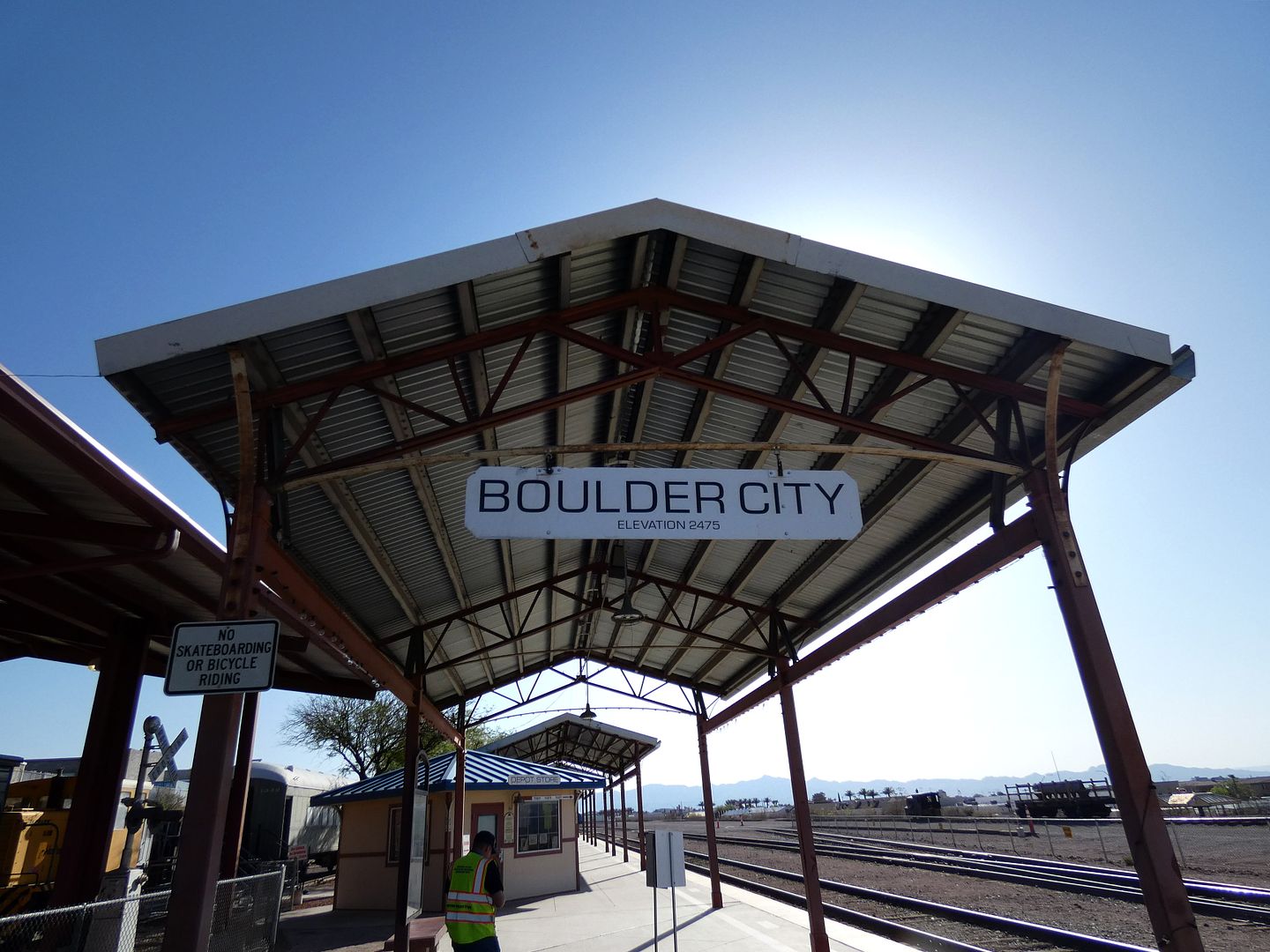
After waiting over 11 years, my visit ended up being well worth the wait (and the drive from Vegas)...
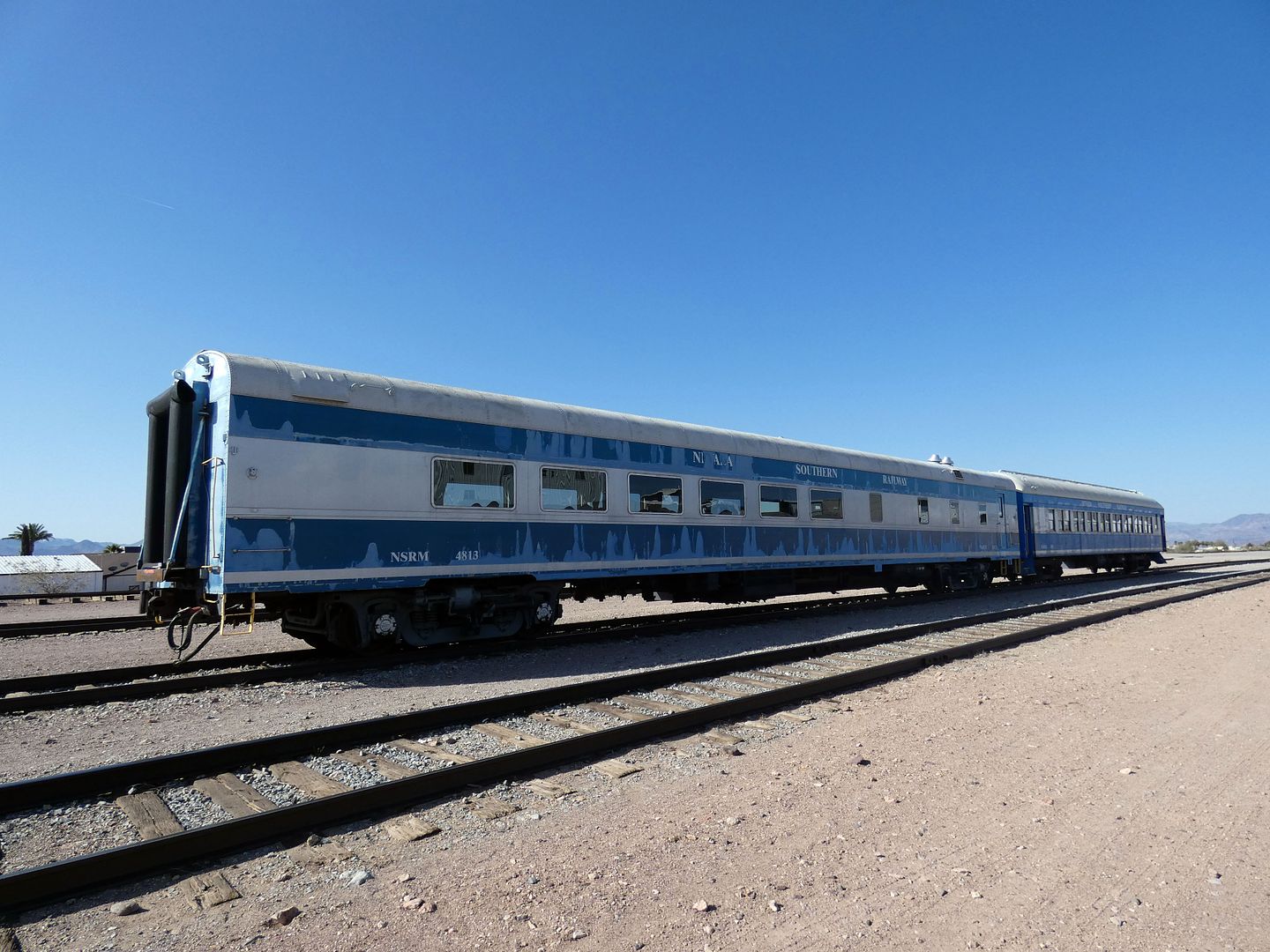



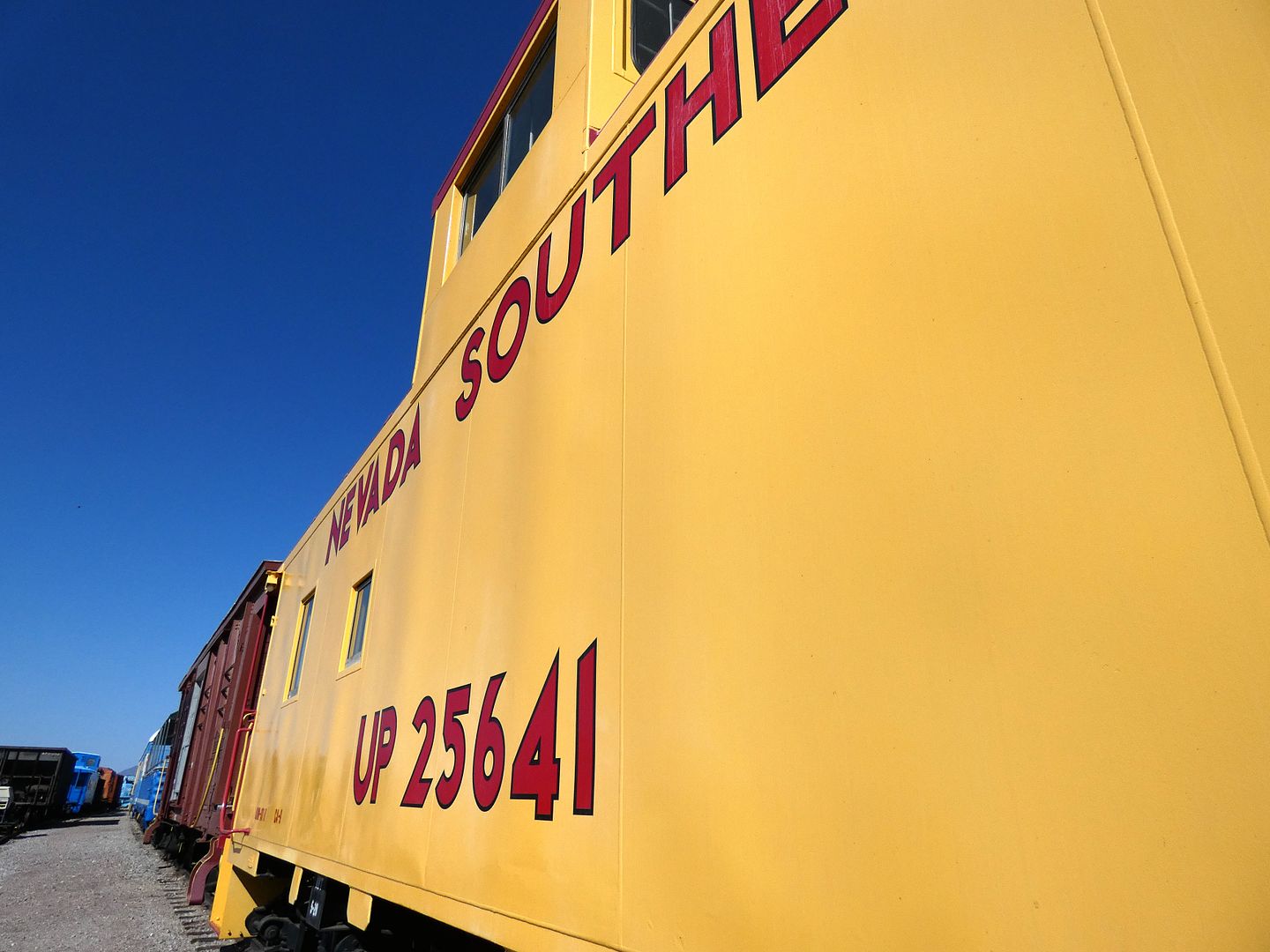


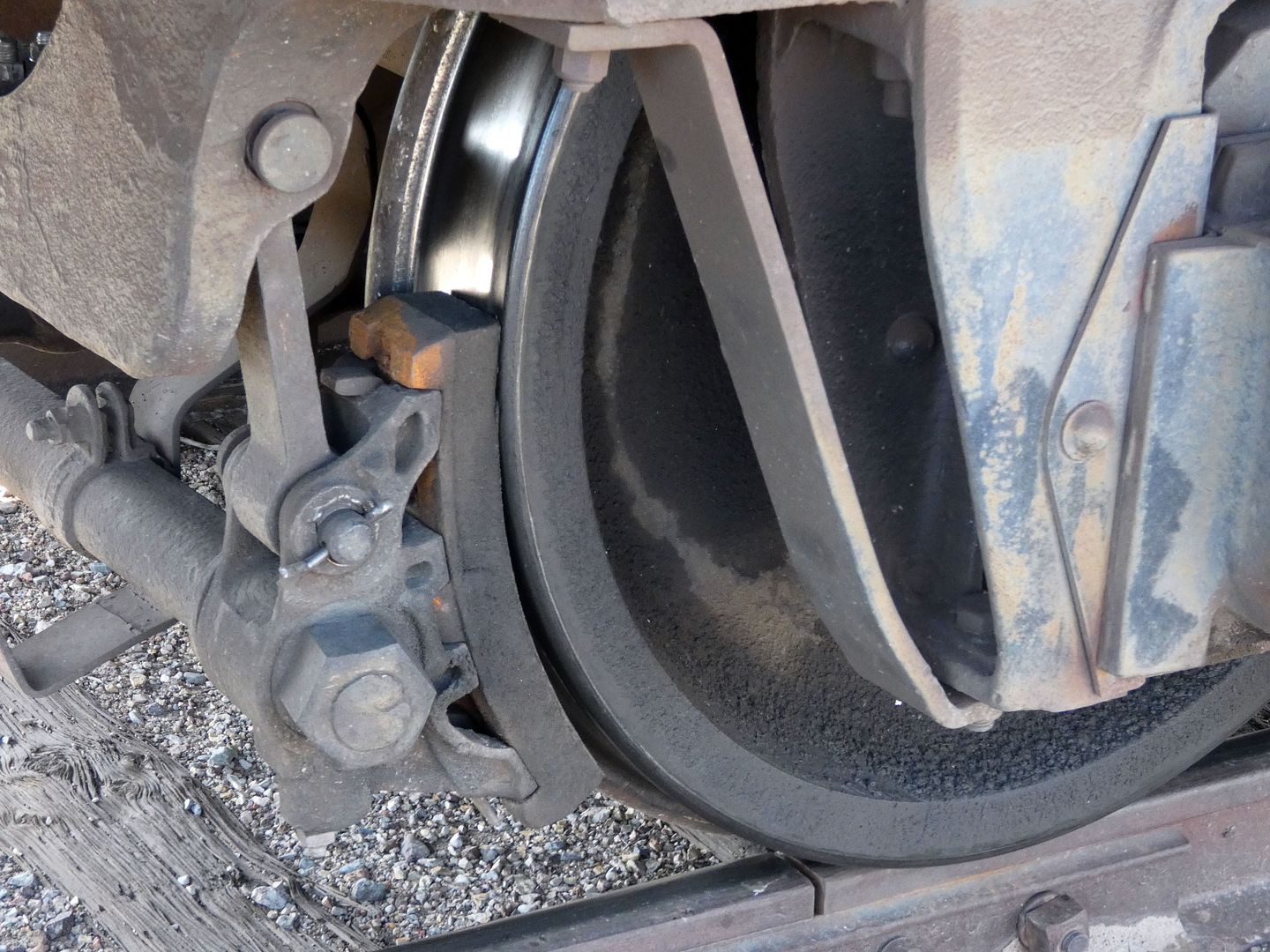

...because in addition to the train ride and the museum...

...I also got to witness the volunteer train crew getting the rolling stock ready to ride the rails.

In the front was one of the museum's four operational diesel locomotives, the Union Pacific No. 844...

...a type GP-30 diesel-electric locomotive built by General Motors Electro-Motive Division, with a turbocharged V16 engine that develops 2250 horsepower.

All the way in the back, at the Union Pacific 25641 caboose...

...one crew member actually manually turns a hand brake.

That's also where we watched the crew inspect the air pressure-controlled brakes to make sure the pistons properly moved out of their cylinders...

...and that the brake shoes aligned properly.

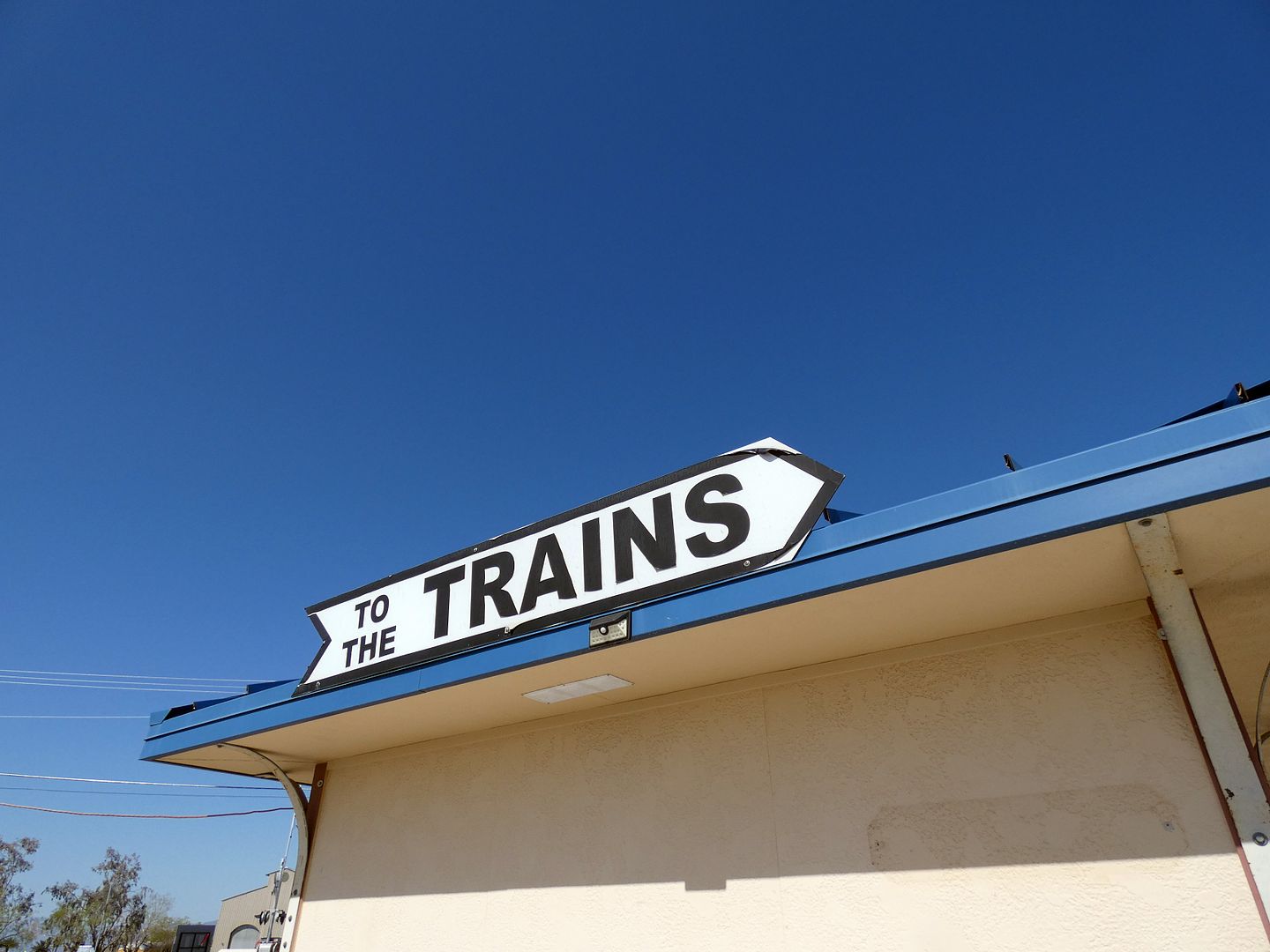

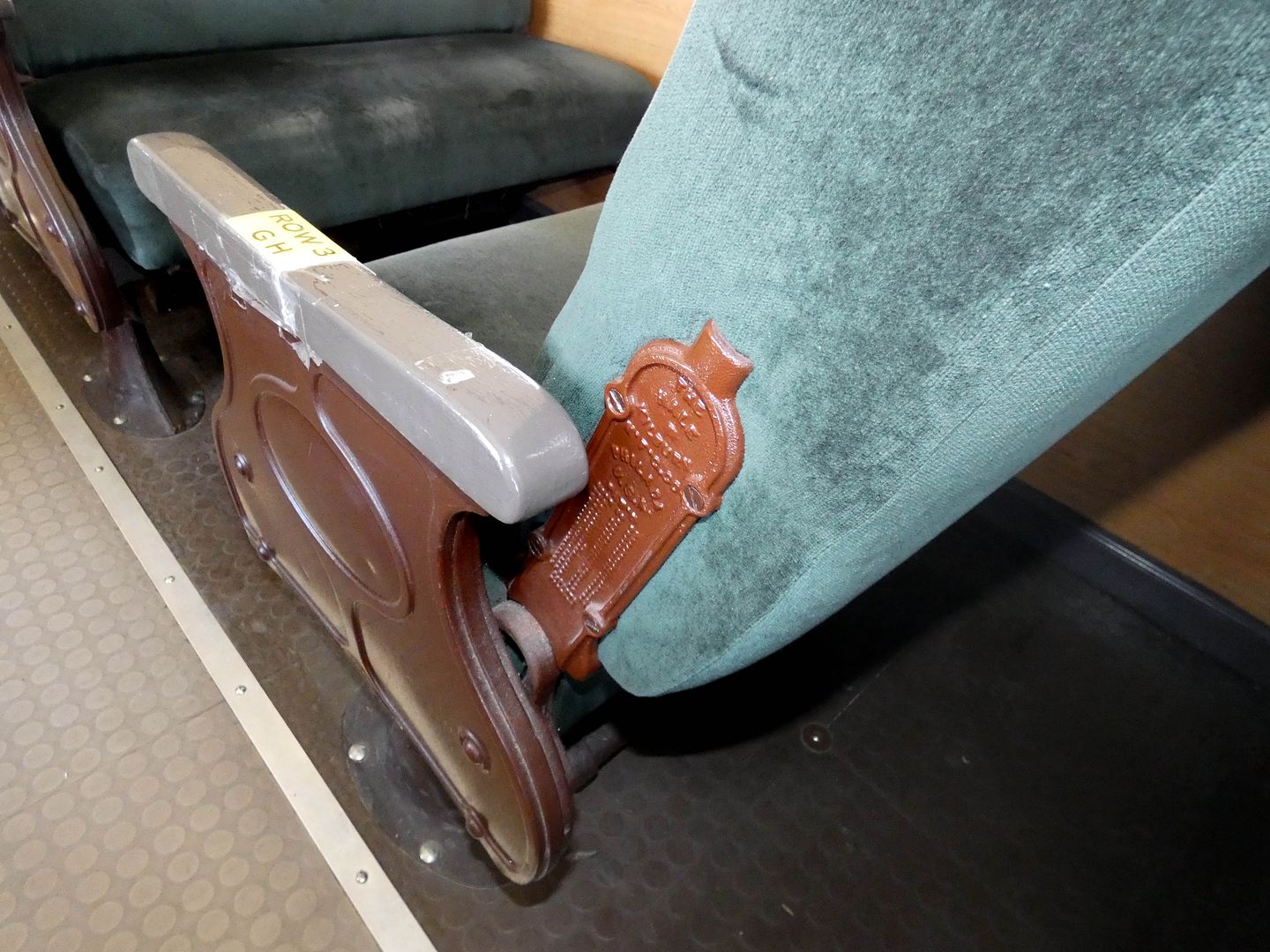
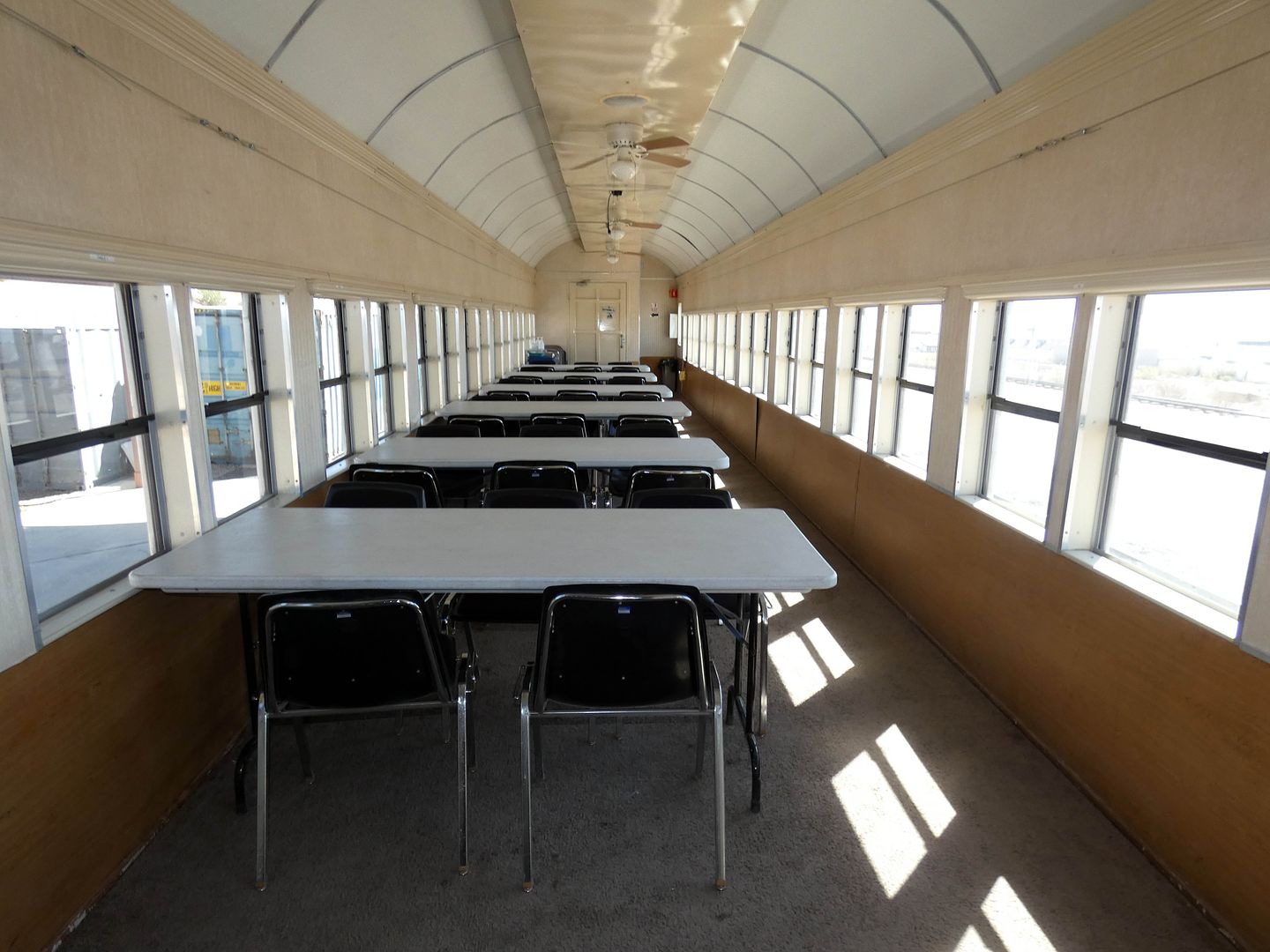
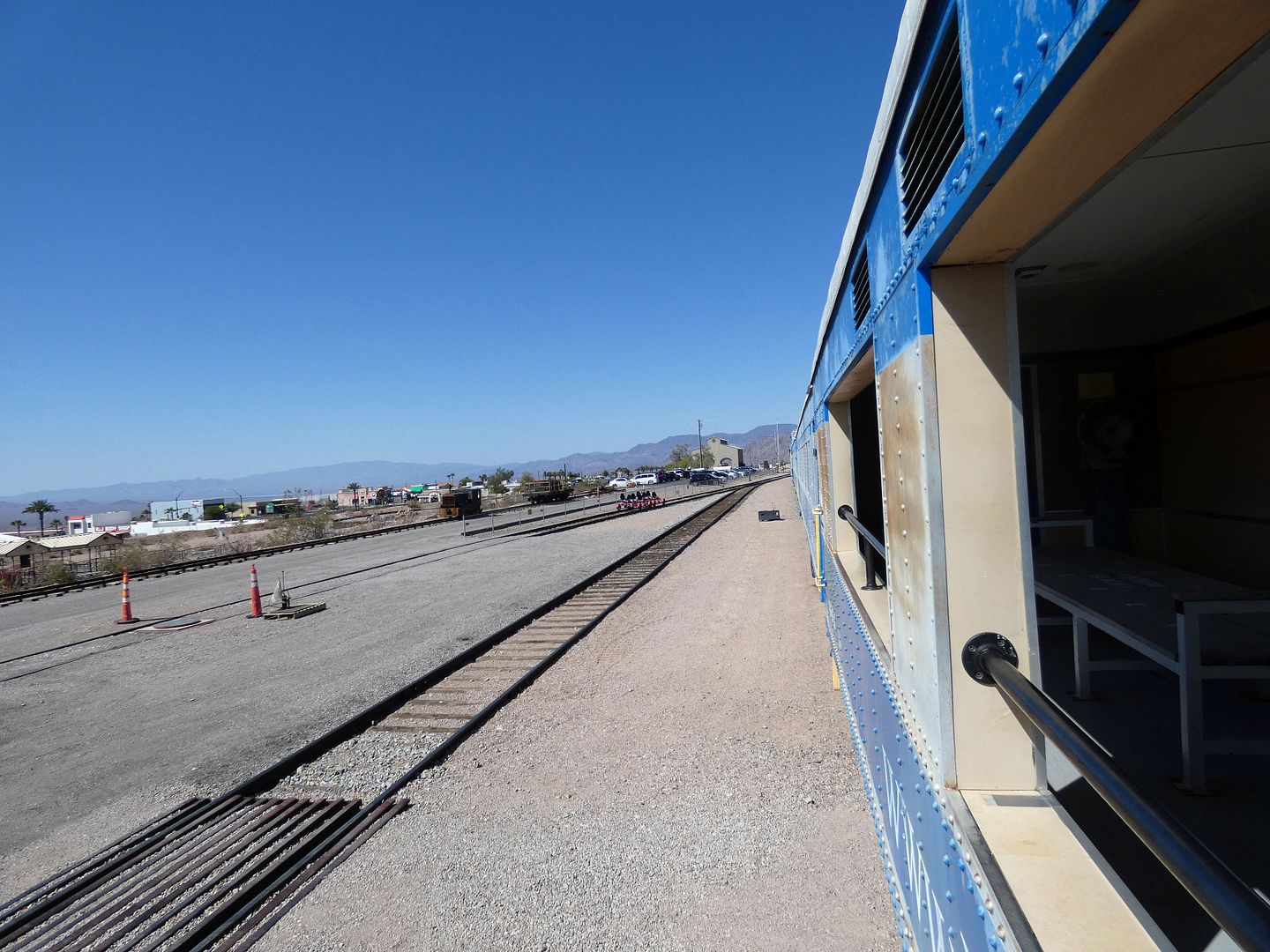

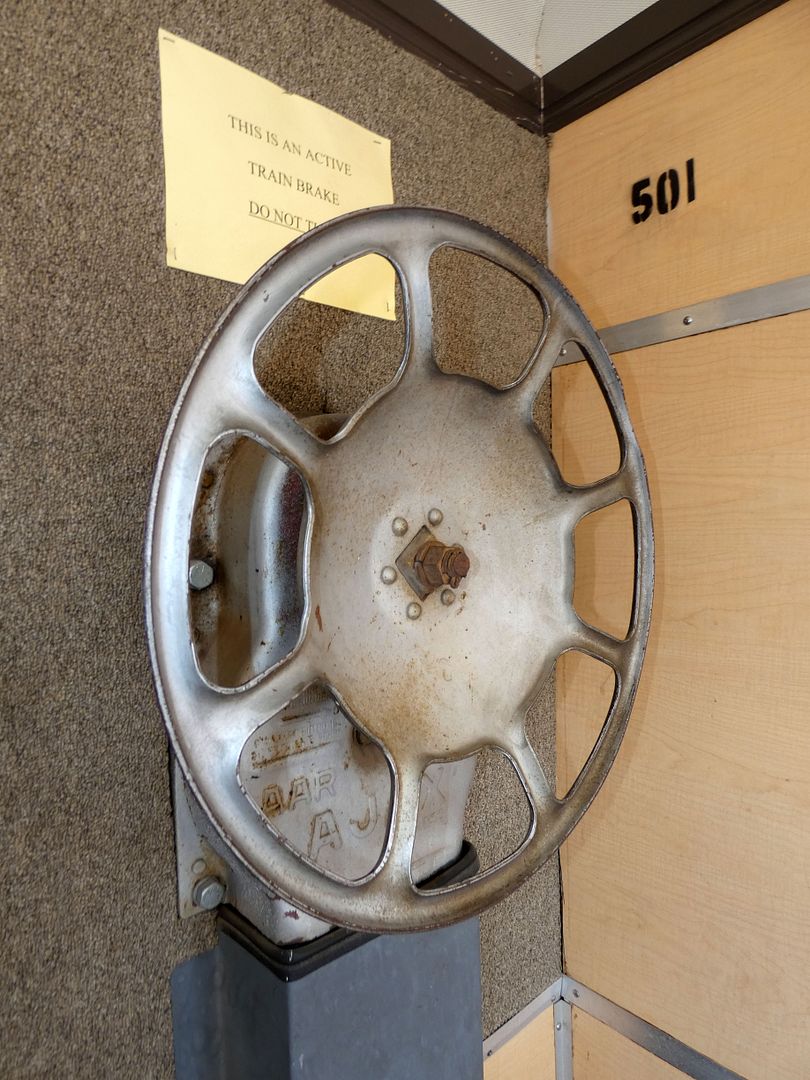
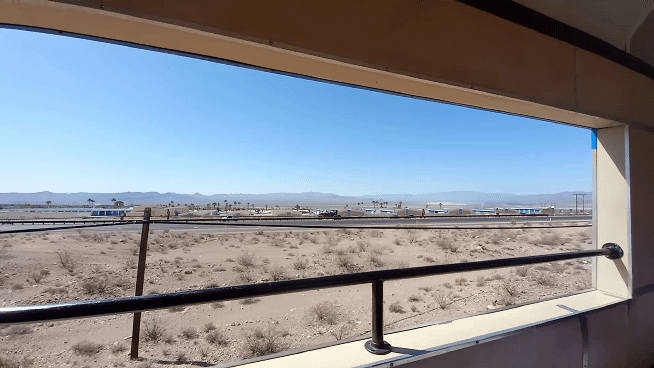
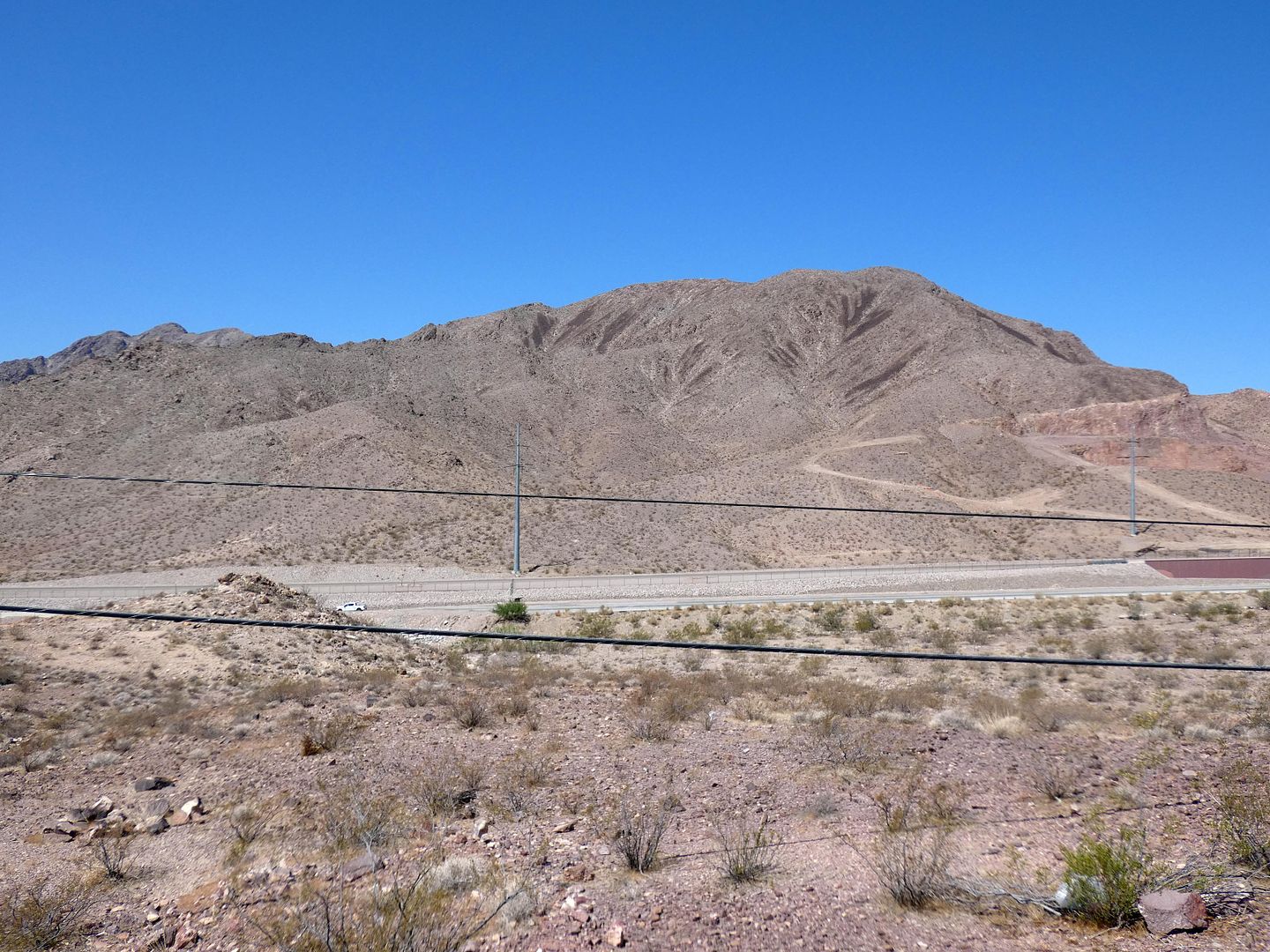
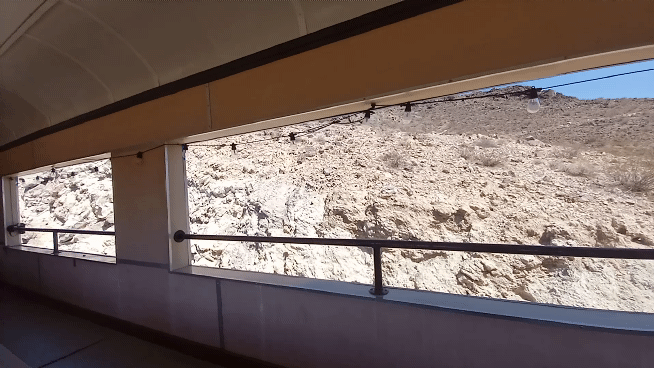

Since all the rails there are active, they're outfitted with derails as an emergency stop measure at the track level, just in case any of the train's brakes ever fail.

The museum's tracks, installed in 1931, were part of Union Pacific's historic Boulder Branch spur line that helped build the Hoover Dam. UP donated the right-of-way between Boulder City and Henderson for the creation of a museum in 1985.

For the first train ride of the morning, I boarded the NSRM 604 passenger car, a Harriman style coach...

...passing by its upholstered seating...

...walking through a makeshift dining car...

...all the way to the circa 1914 hard top open-air car, the NSRM 501...

...where I took my place upon its bench-style seating...

...and tried not to be tempted by the active train brake that begged to be turned...

...instead focusing on the spectacular views on either side.

Our train departed from the Boulder City station, traveled past the shop, and ran alongside the north/westbound side of the Boulder City Parkway/Great Basin Highway (U.S. Route 93)...

...just south of the rugged geology of Bootleg Canyon.
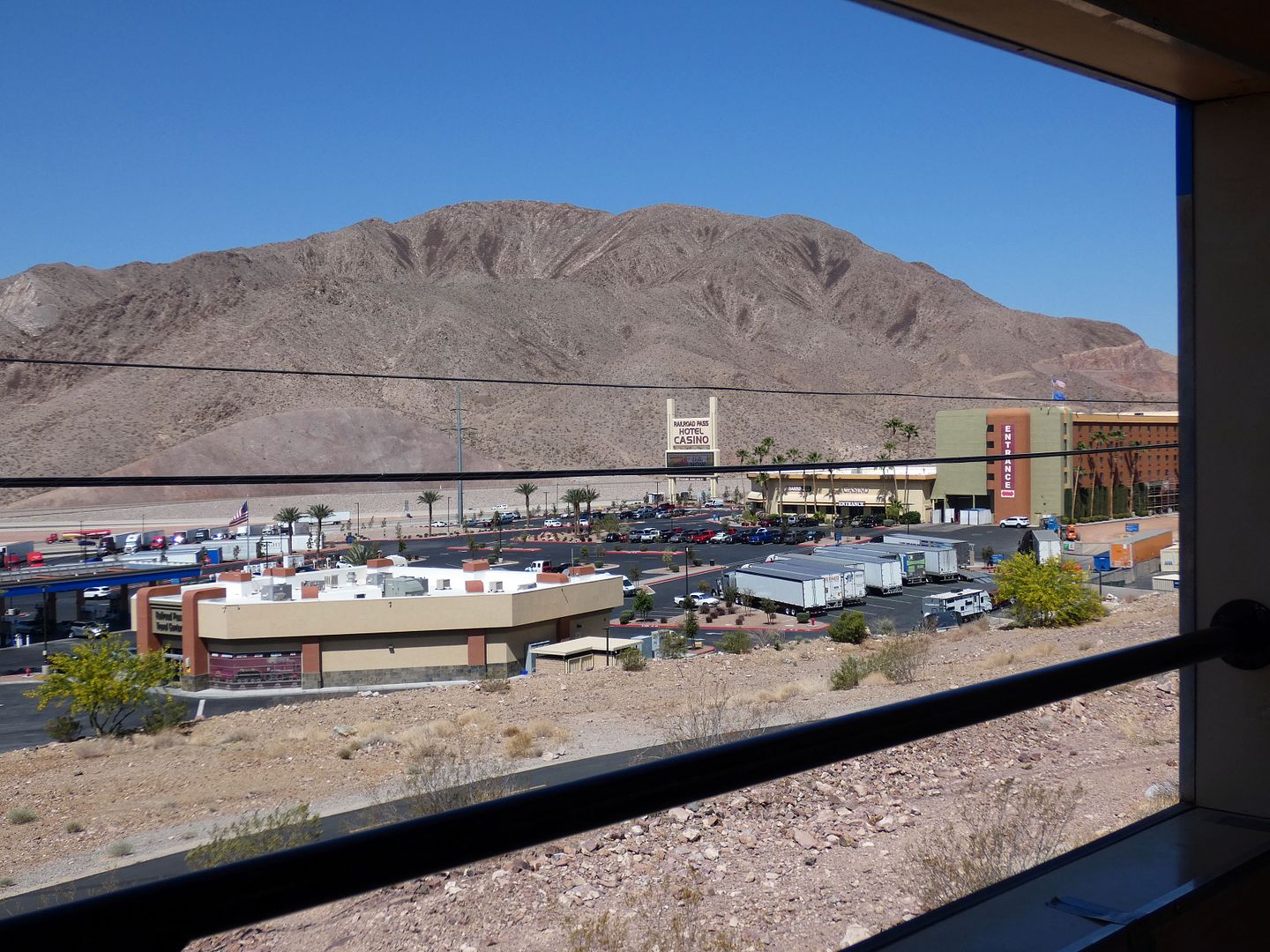
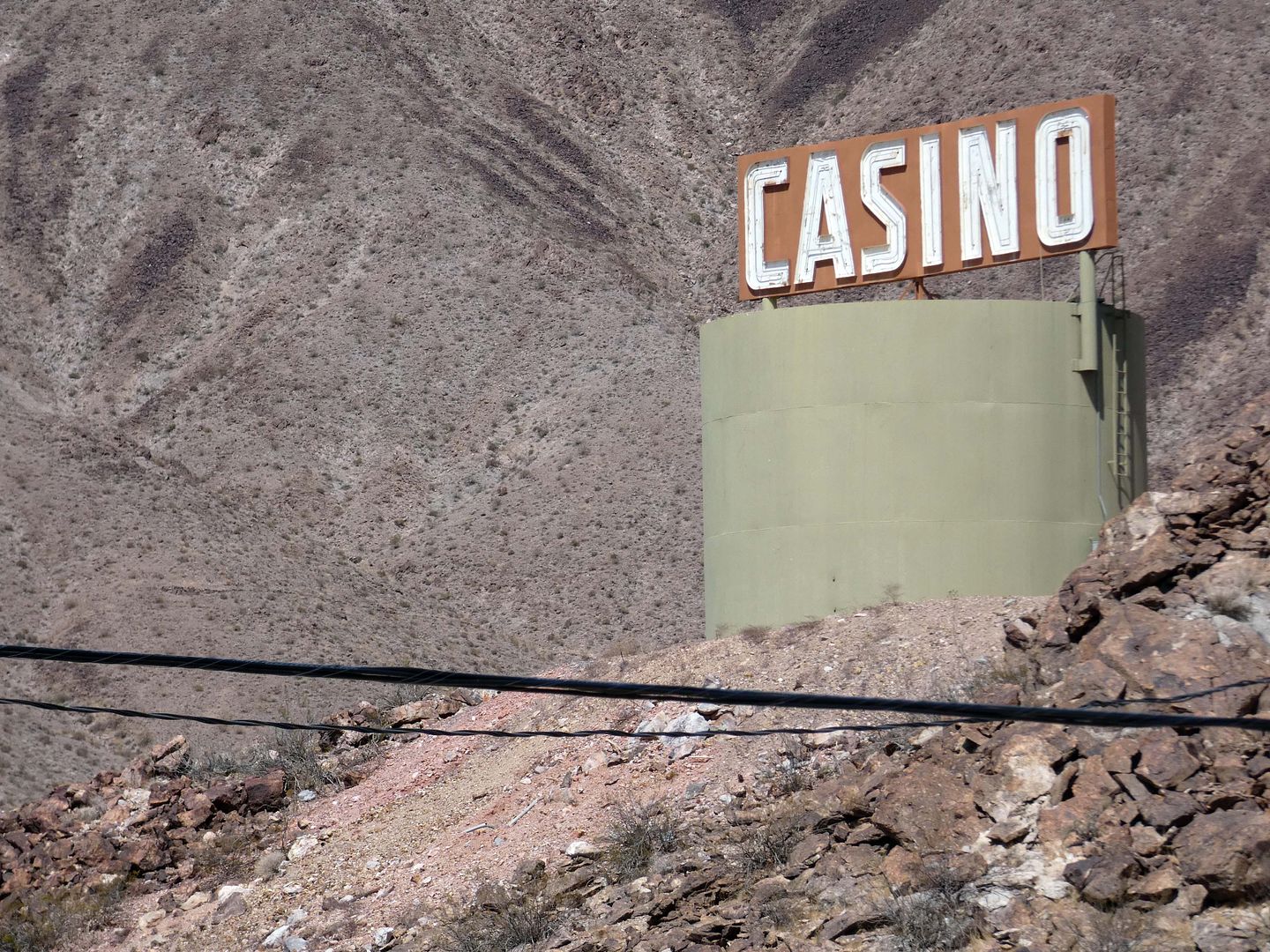
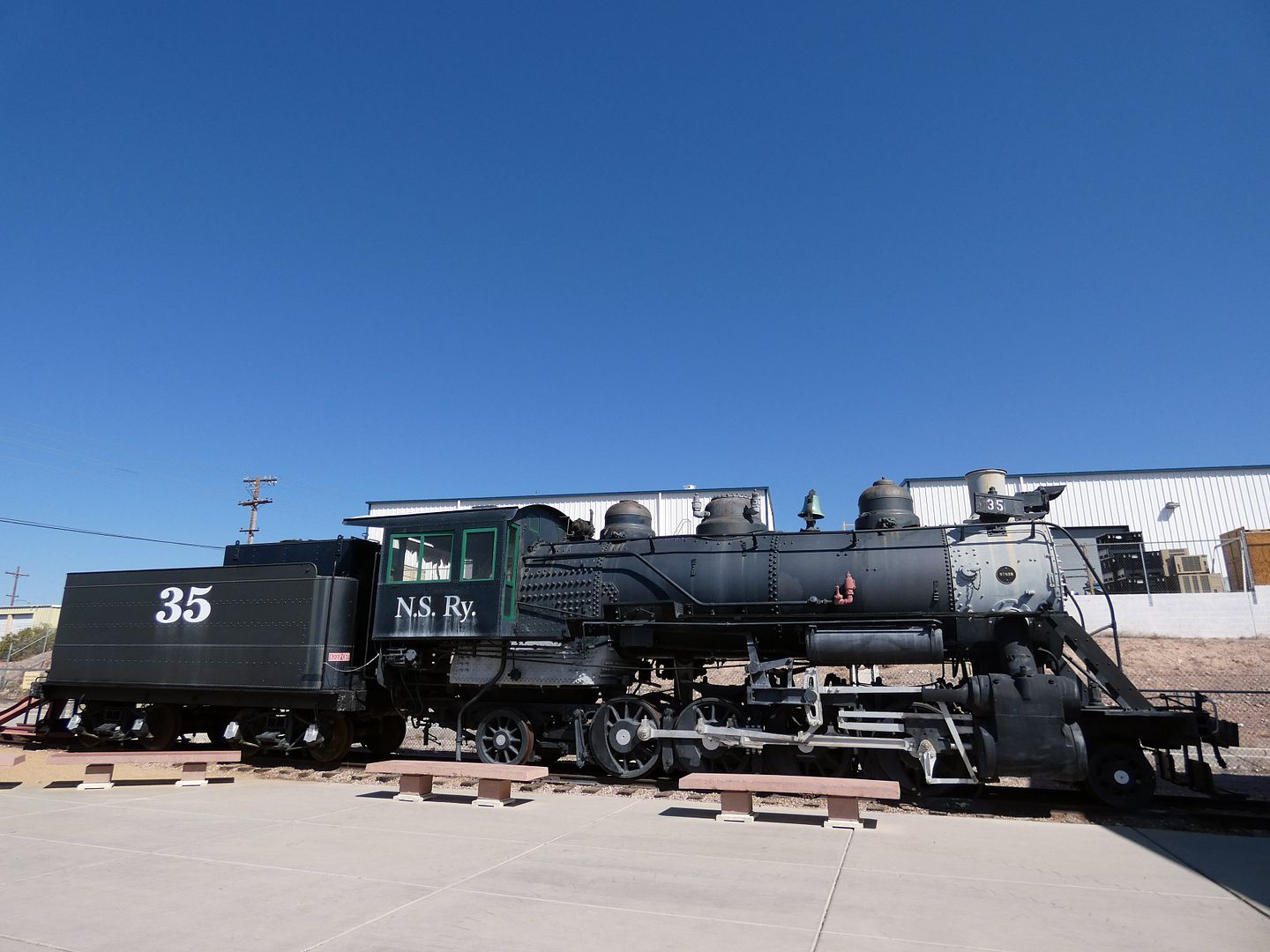
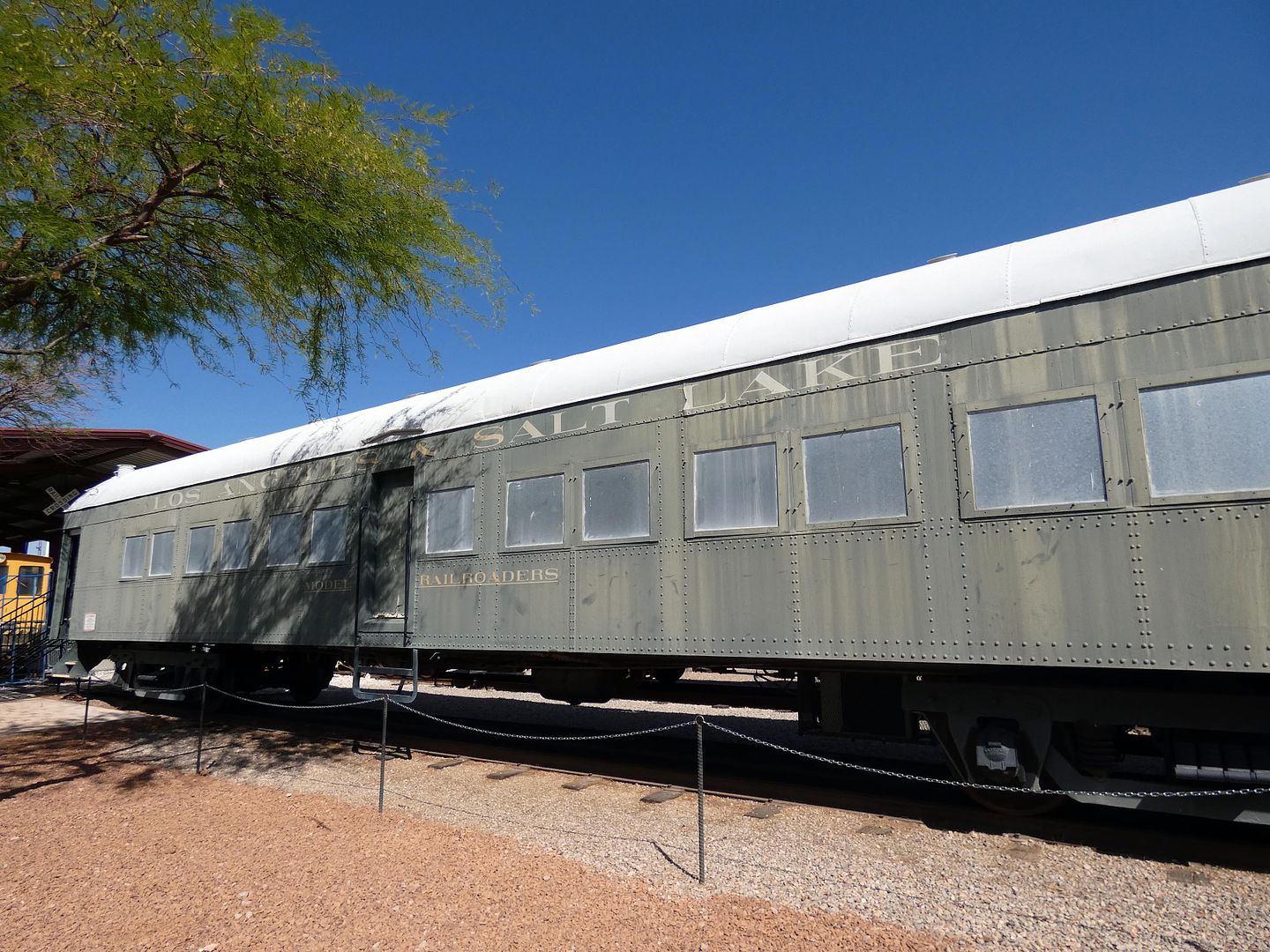

The excursion train only goes as far as Railroad Pass, on the outskirts of Henderson—where the Railroad Pass Hotel/Casino, built in 1931, still stands as one of the oldest in Nevada.

According to a 1987 issue of Henderson Home News, the casino had been popular with the nearby dam builders living and working in Boulder City, technically a "federal reservation" established by the U.S. government—which had outlawed gambling and alcohol consumption there.

After the excursion train returned to the Boulder City station the way it came, I disembarked and went to check out the outdoor museum of antique rolling stock...

...which varies widely in its collection both in terms of provenance and utility.

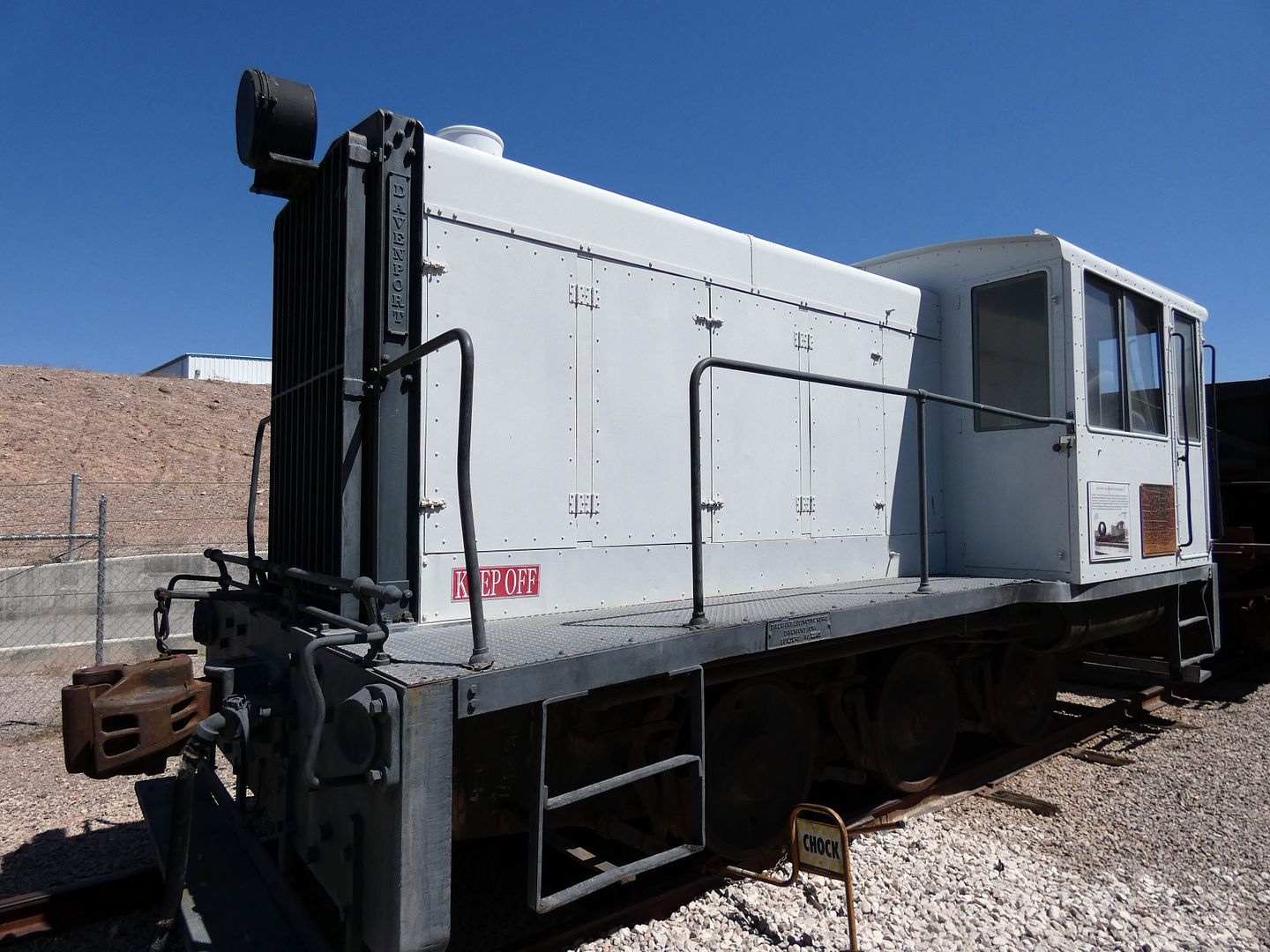
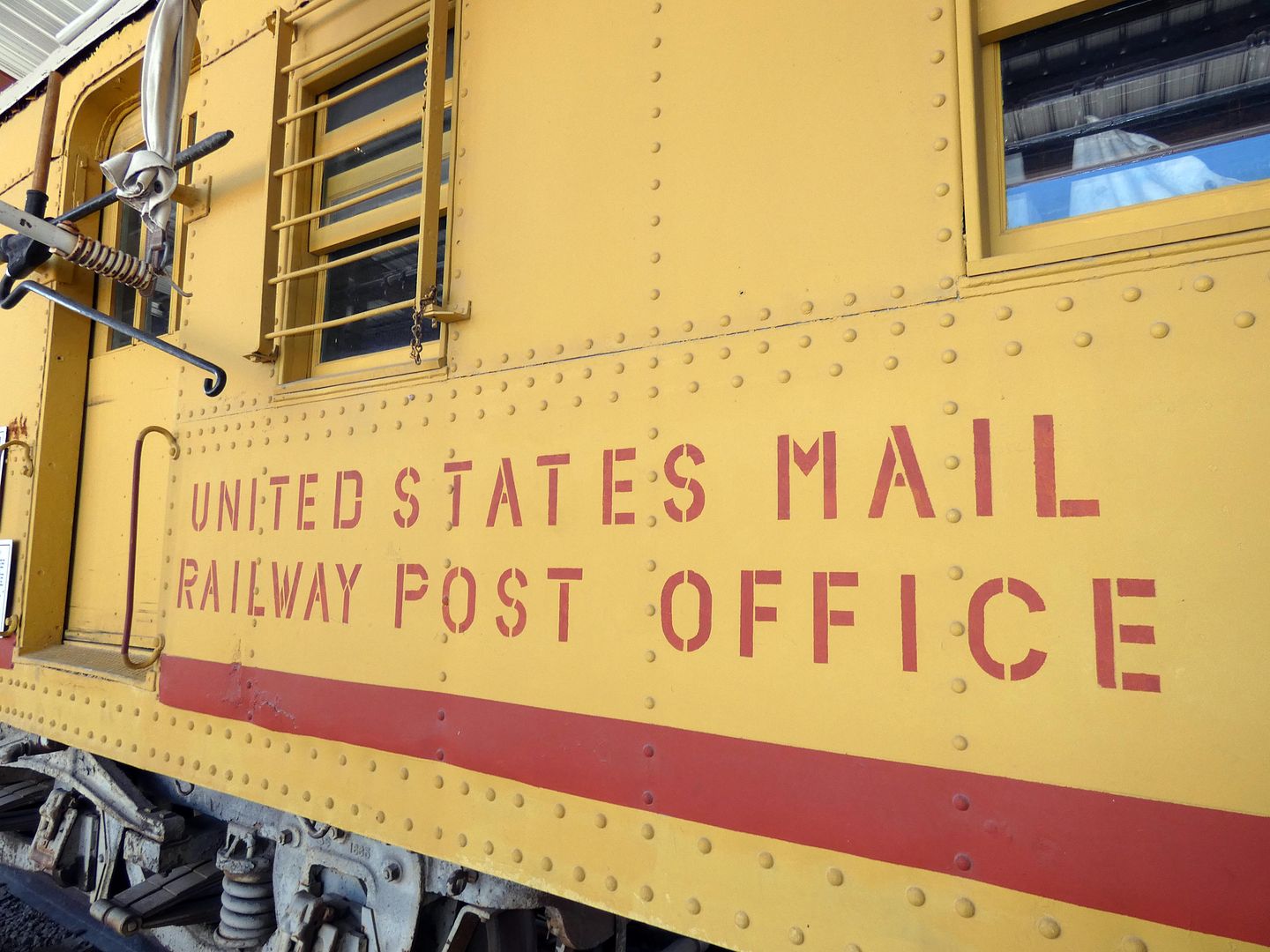

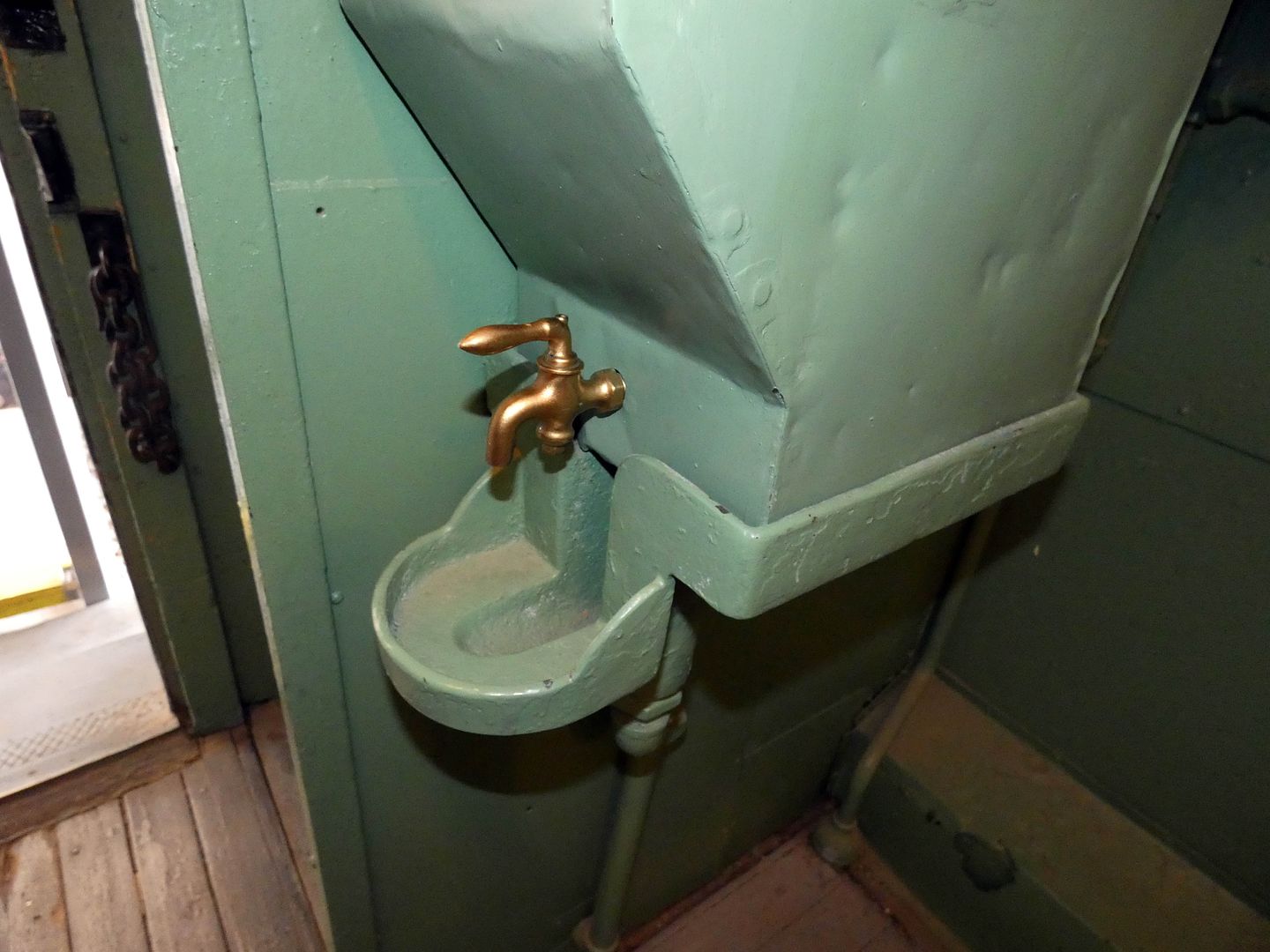
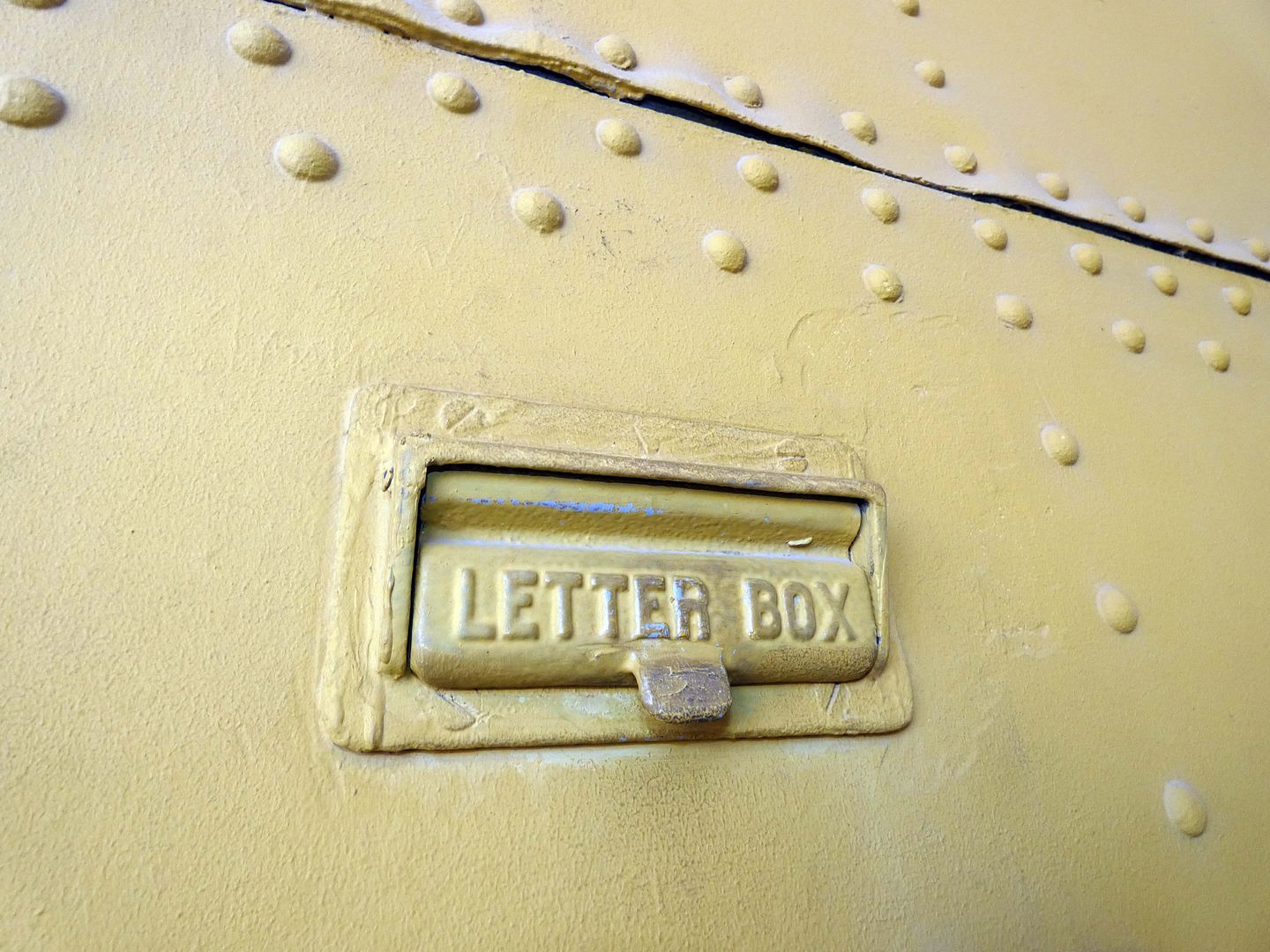

One of the more intriguing pieces of railroad history is the 8-wheeled dump car built by the Western Wheeled Scraper Company of Chicago in 1927 and used by Six Companies Inc. (literally a consortium of six construction companies) to help build the Hoover Dam. The museum salvaged it from a scrap yard and added it to its collection in 2020.

There's also the Davenport locomotive known as the "Dinky," used by the United States Bureau of Reclamation to haul supplies from Boulder City to the Hoover Dam on the U.S. Government Construction Railroad between 1936 and 1962.

The most thrilling was the United States Mail Railway Post Office's baggage and postal car #2314, built by Pullman in 1911.

It was literally a rolling facility for the distribution of U.S. mail as part of a program that ran between 1862 and 1977. This particular car ran on the Oregon Short Line, a subsidiary of UP, until it retired in the late 1950s. (Its current configuration dates back to 1941.)

Mail was collected, sorted, and distributed on these railway post cars—often without stopping at the stations for pickups and deliveries. Station personnel had to make the exchange, as they called it, "on the fly" with the use of a mail crane and satchels.

If you came across one of these postal cars at a standstill, you could also drop a letter into the mail slot—and it would receive a special RPO cancellation.
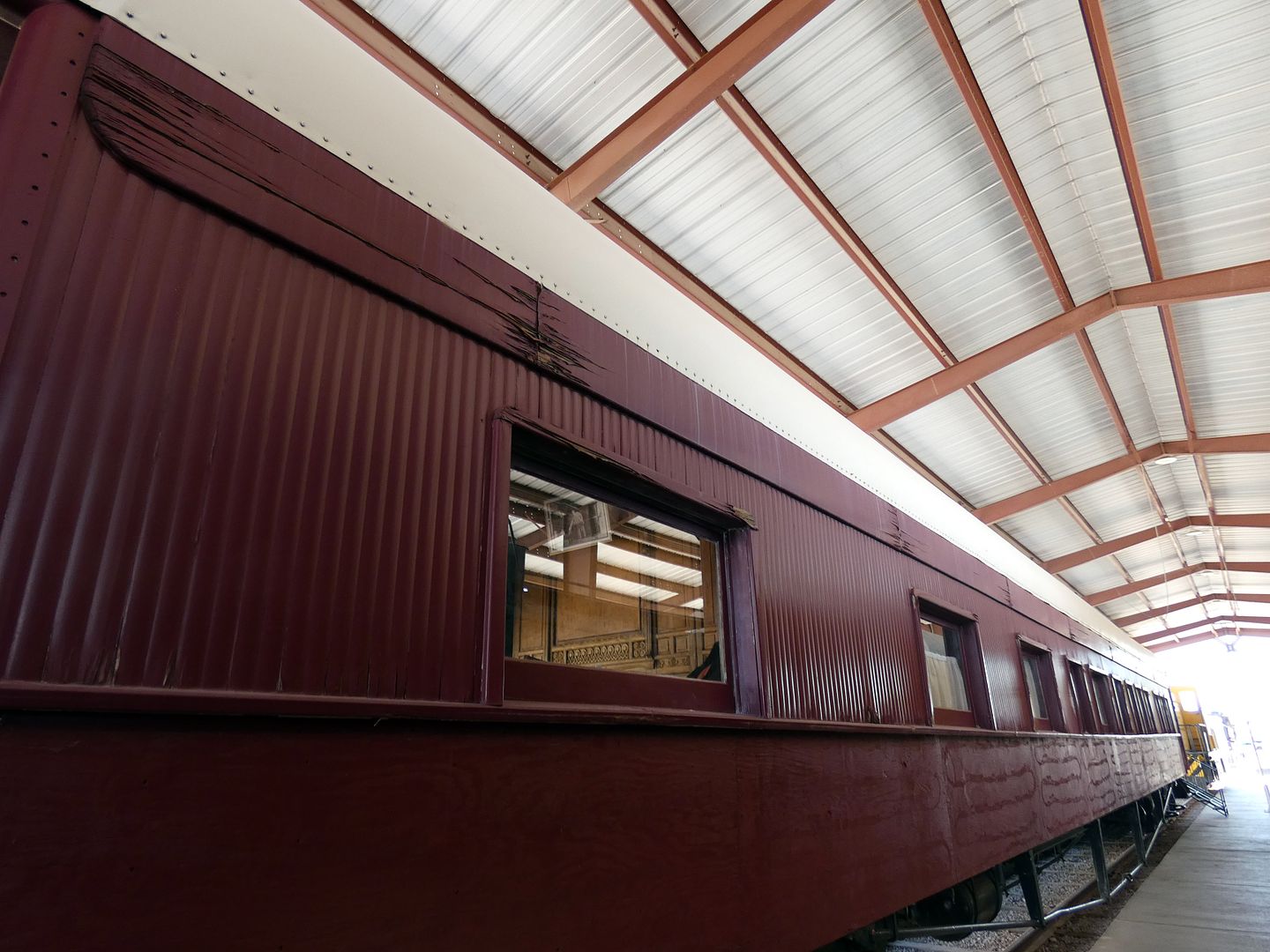
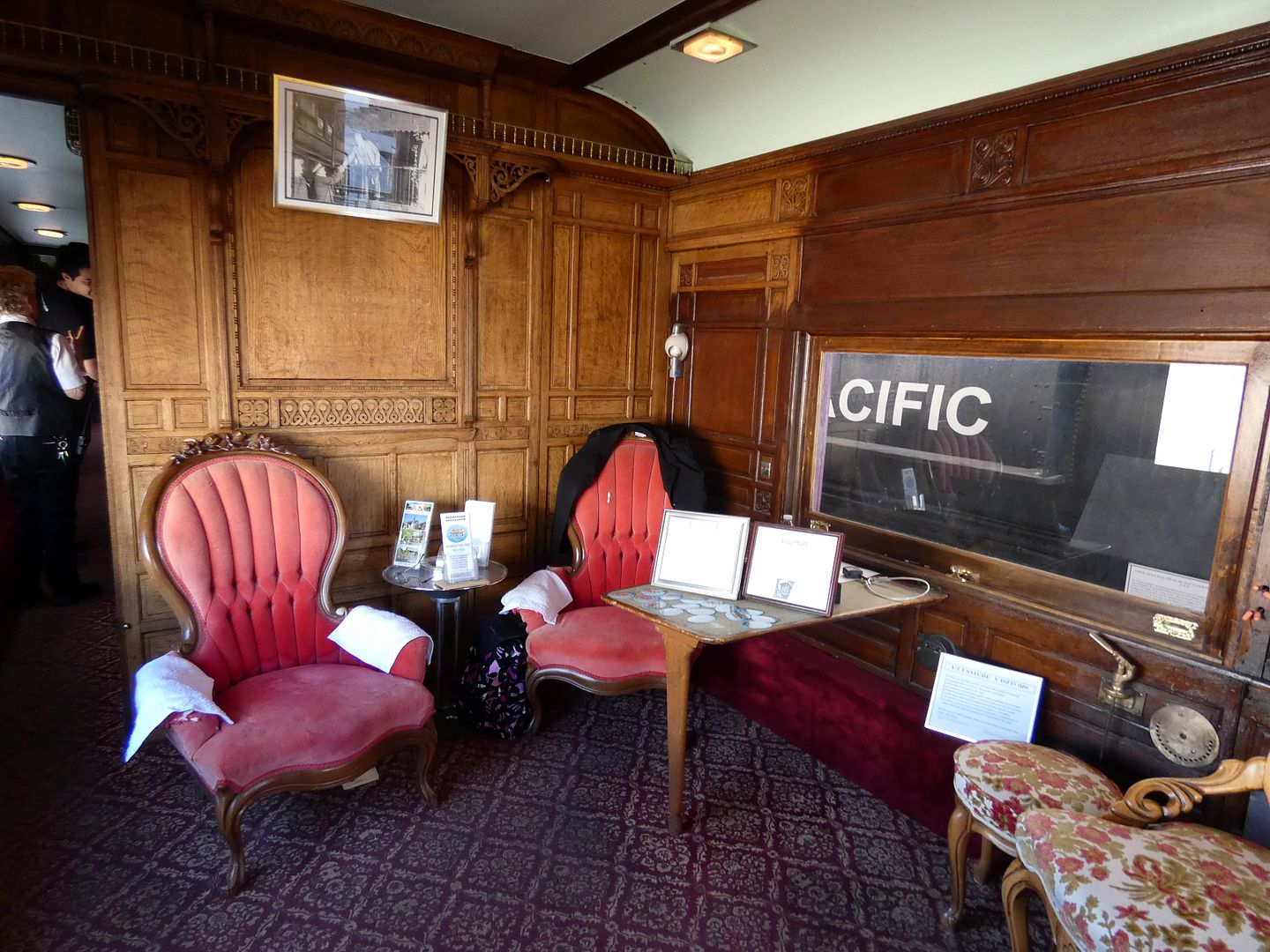

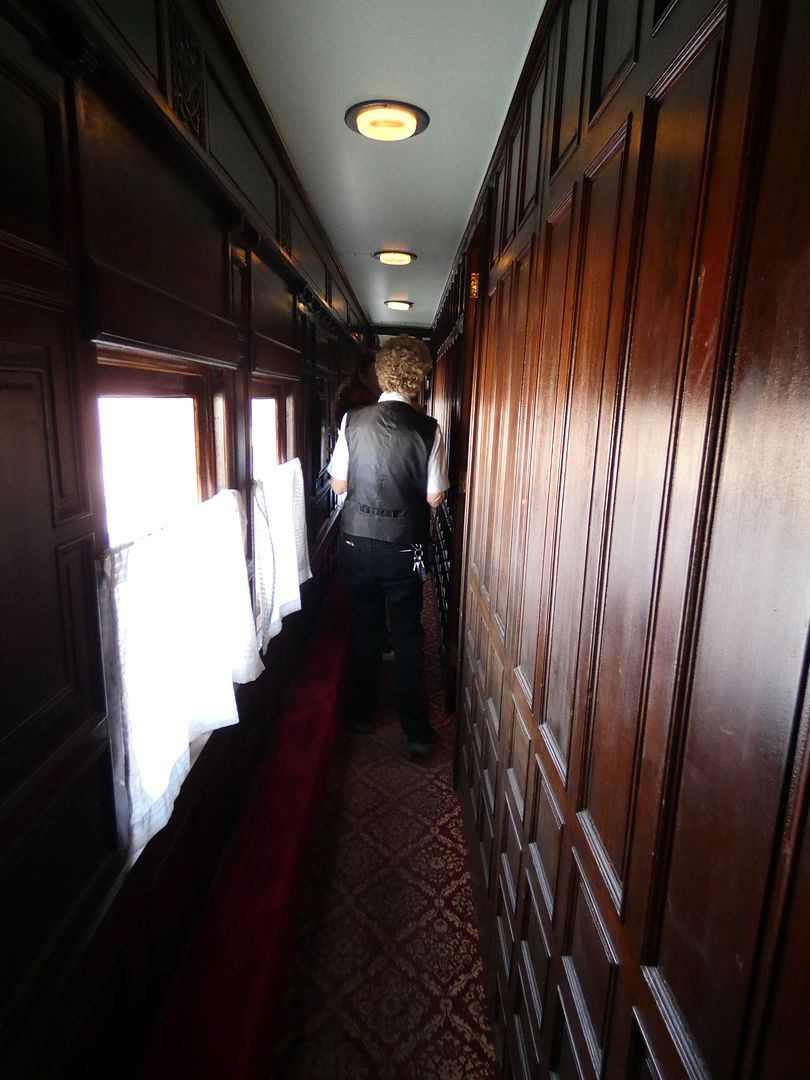
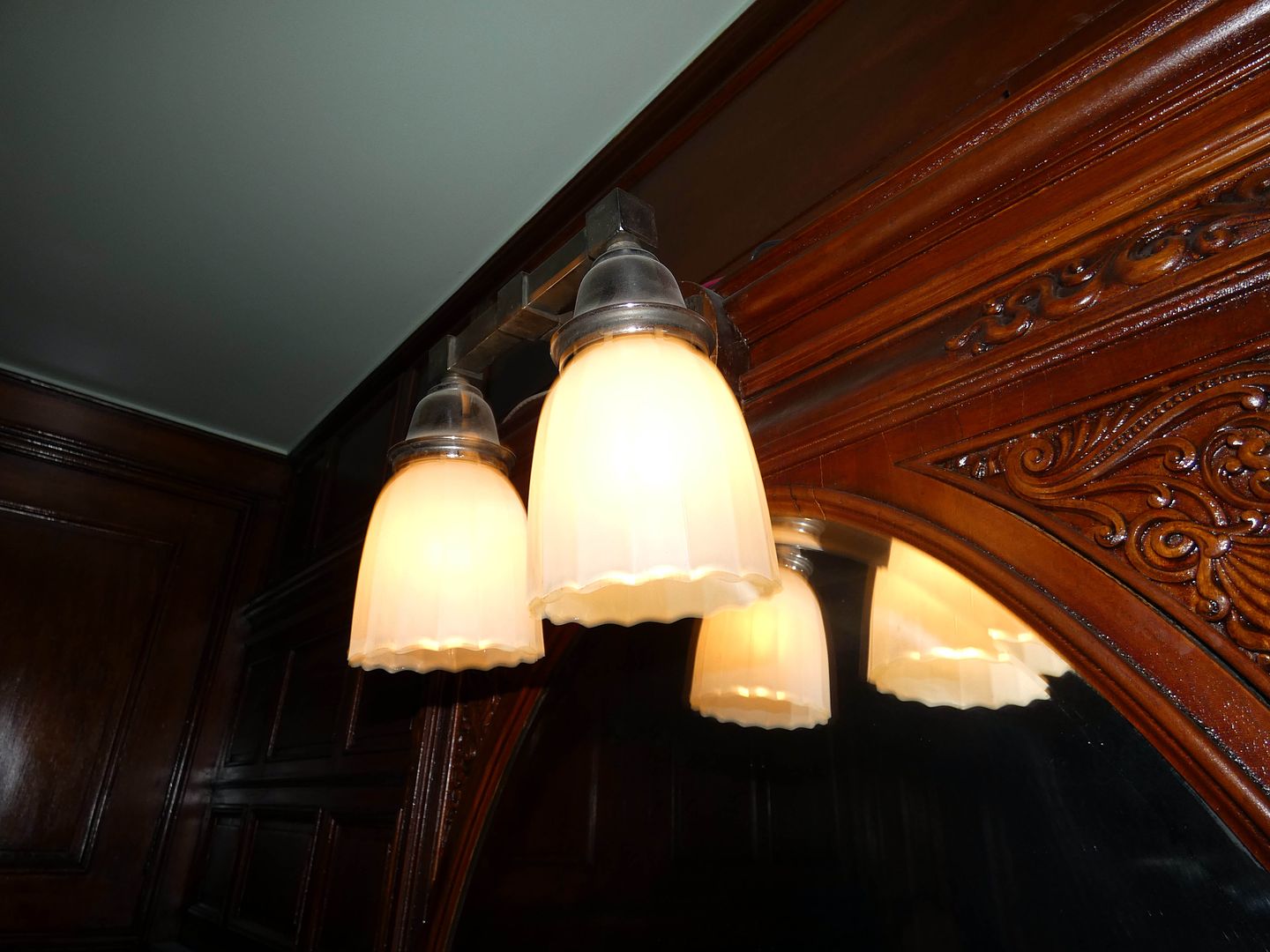
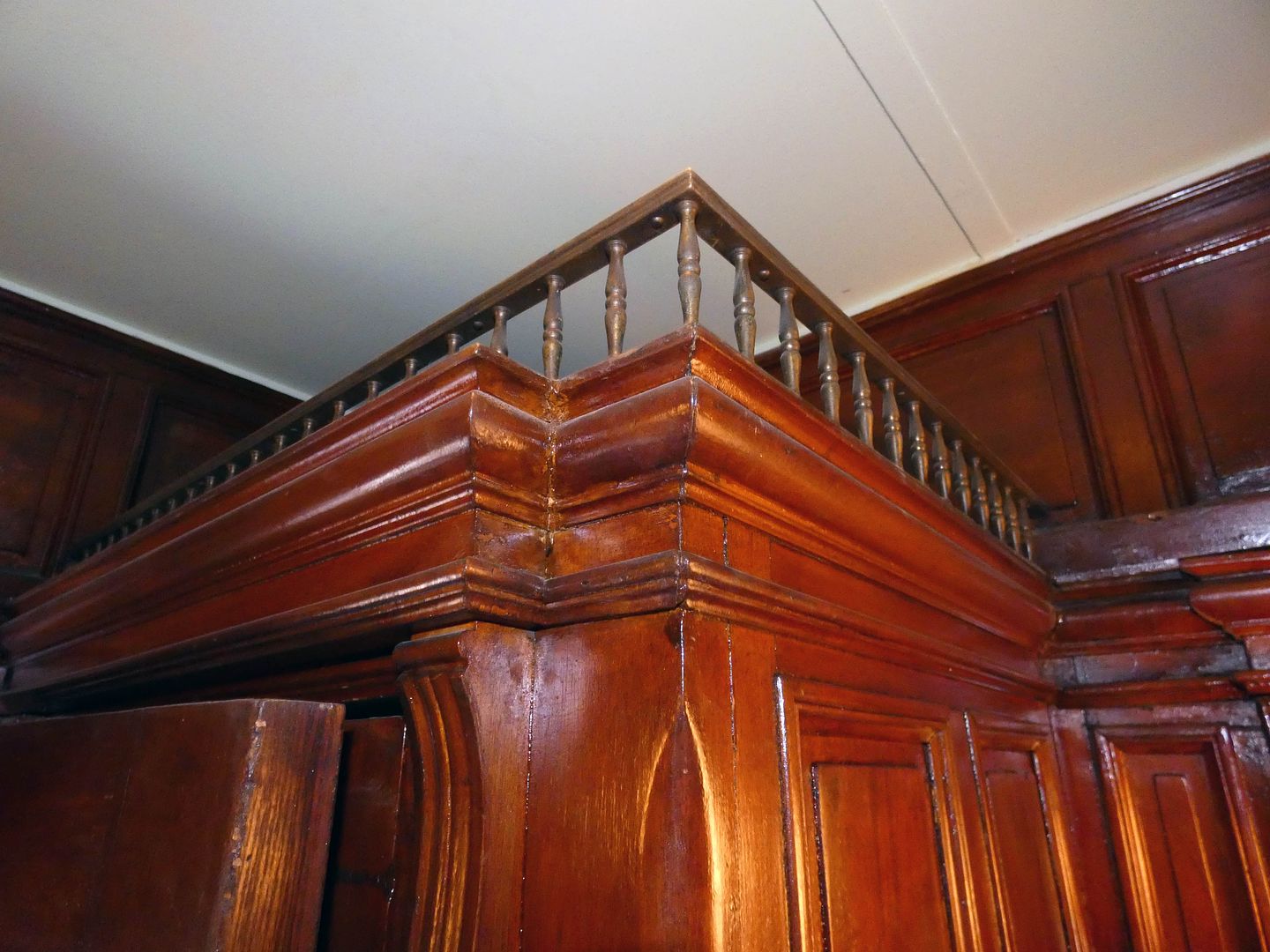
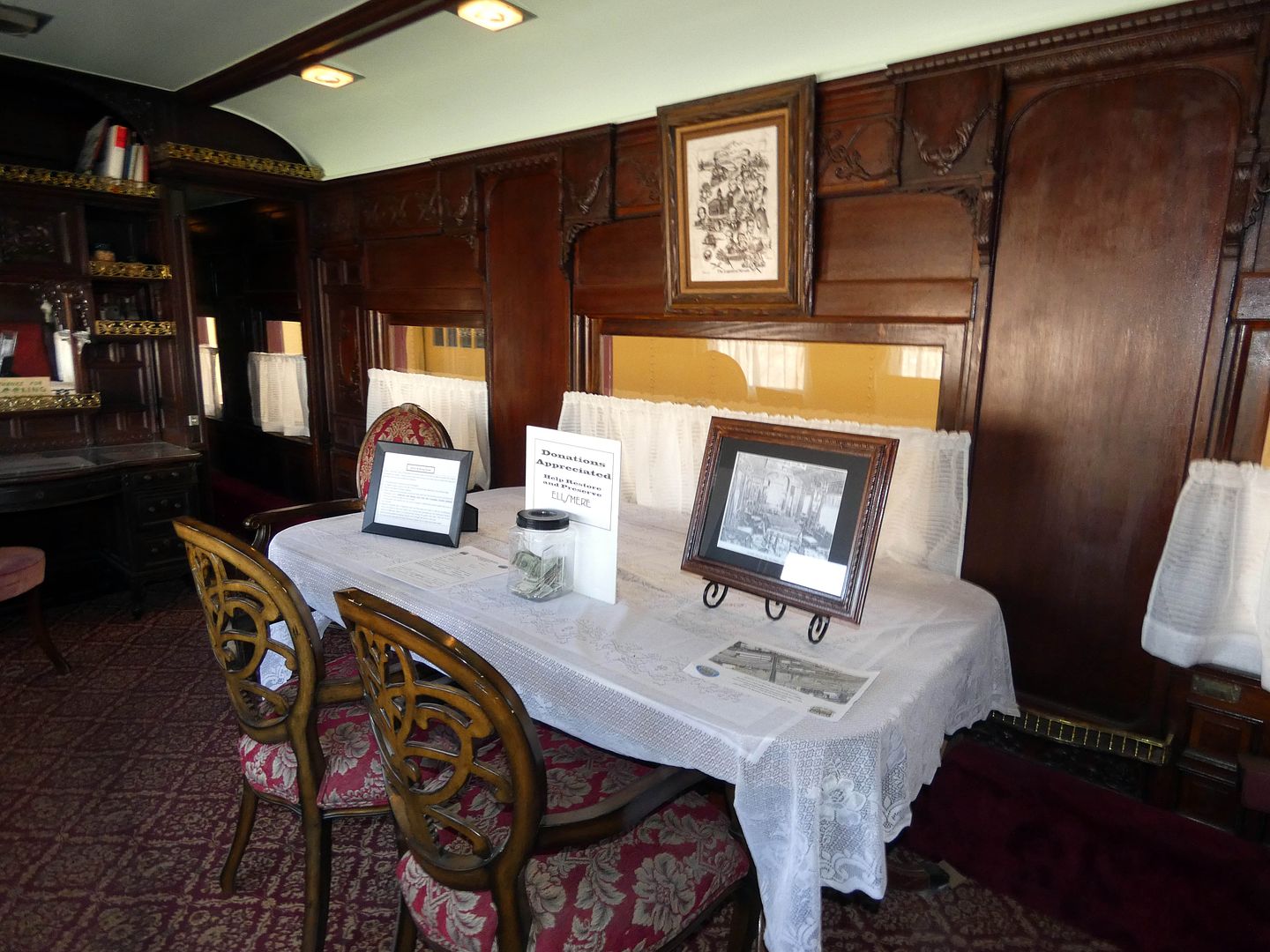
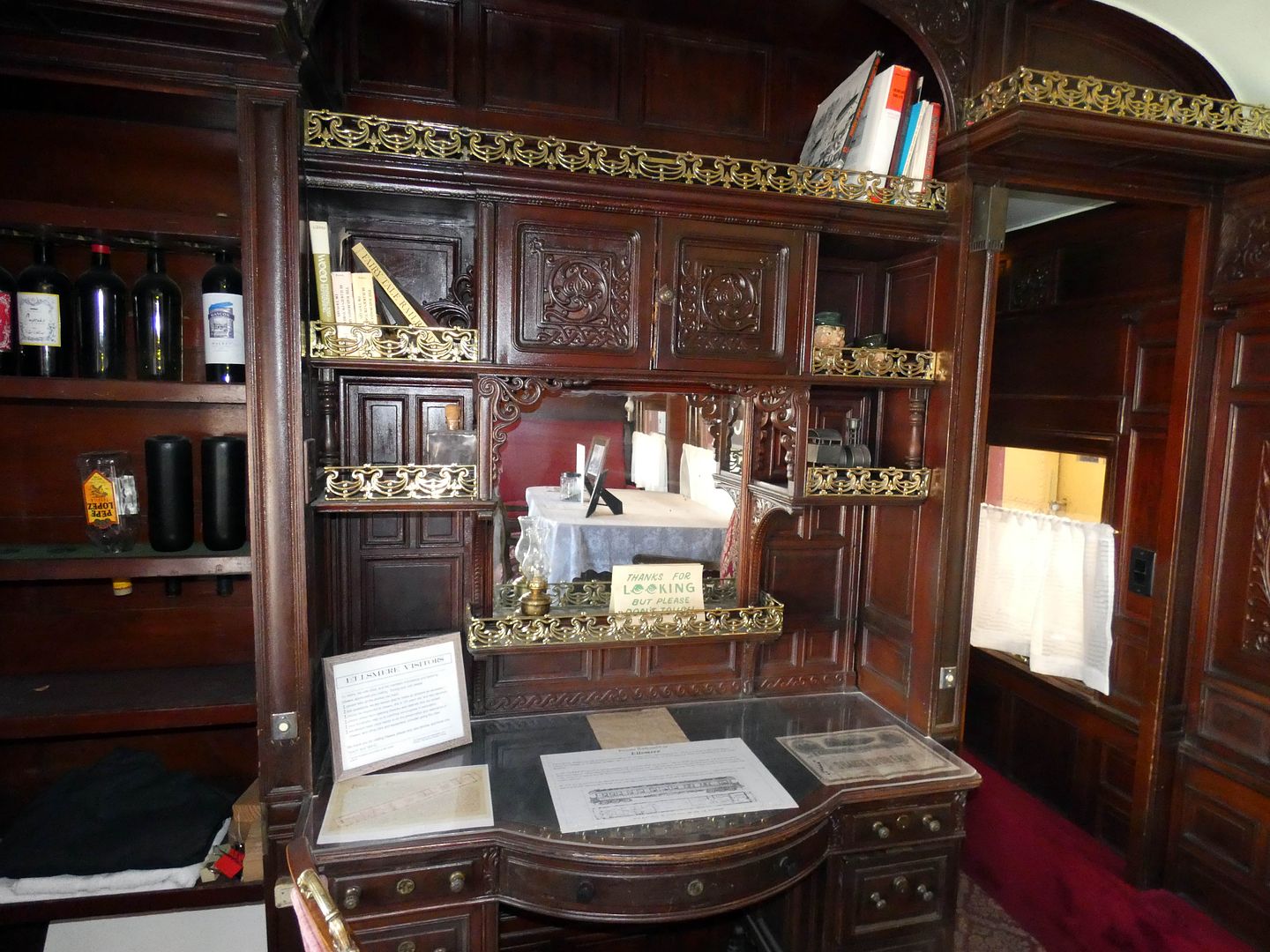
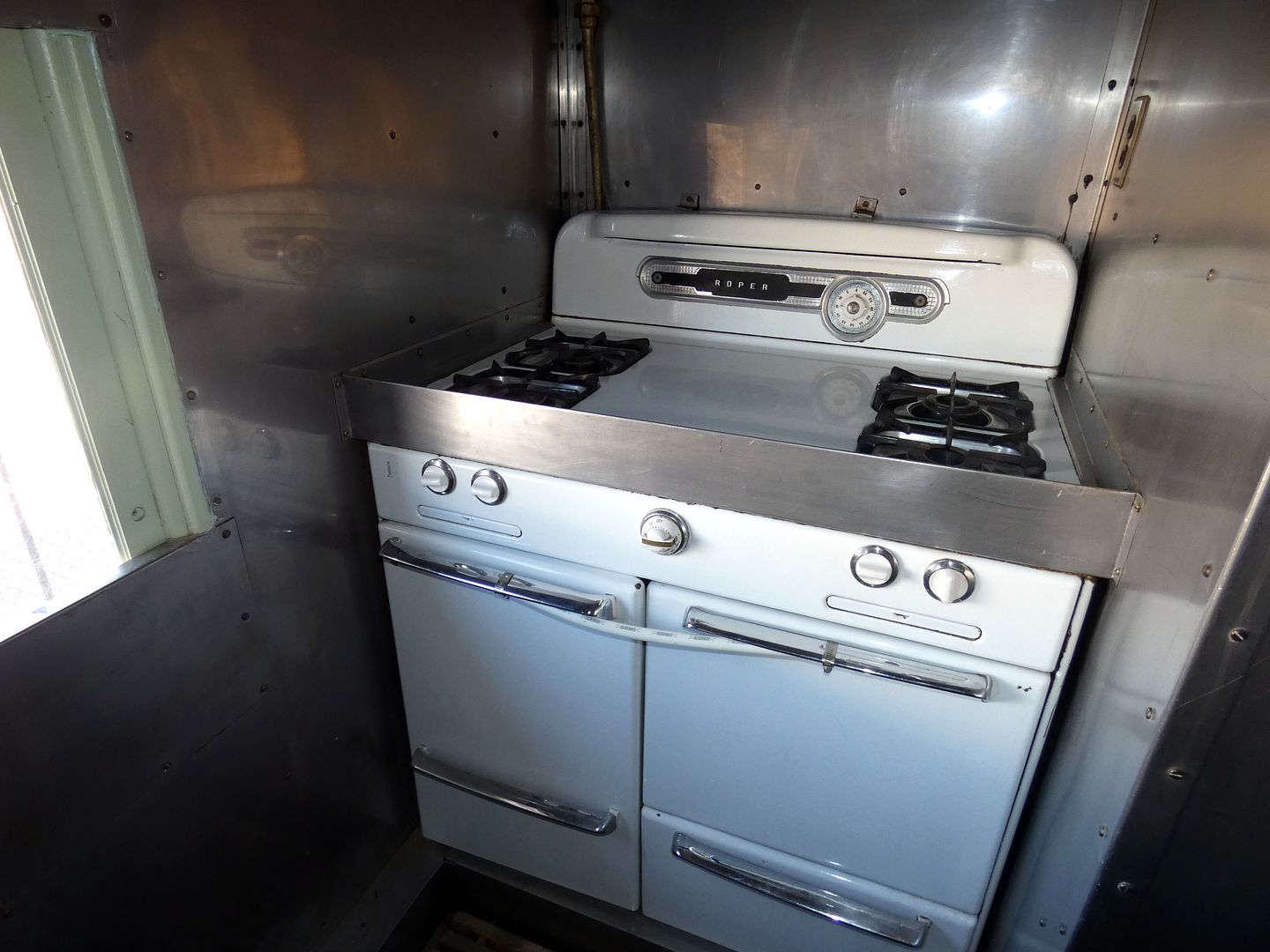
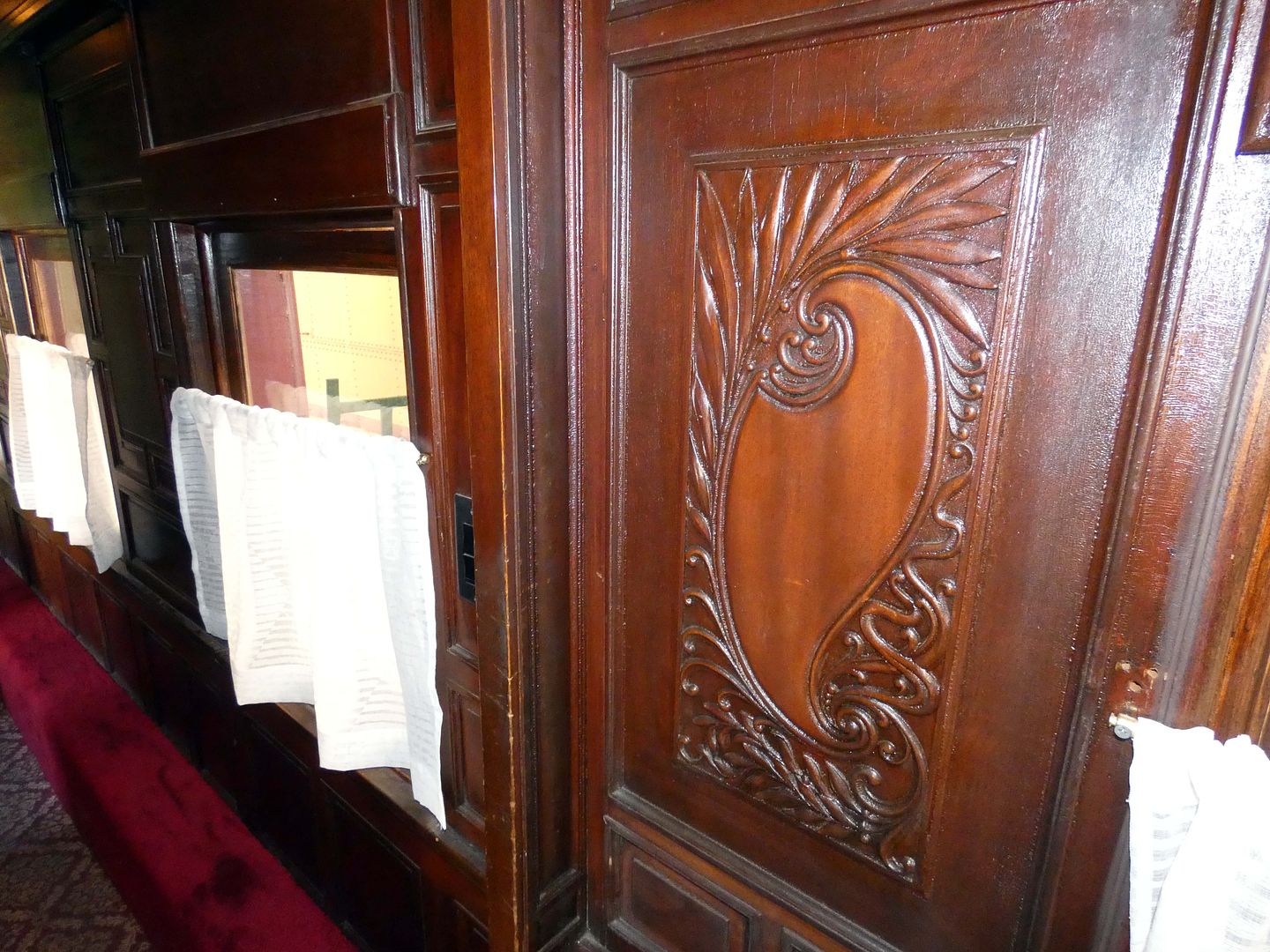
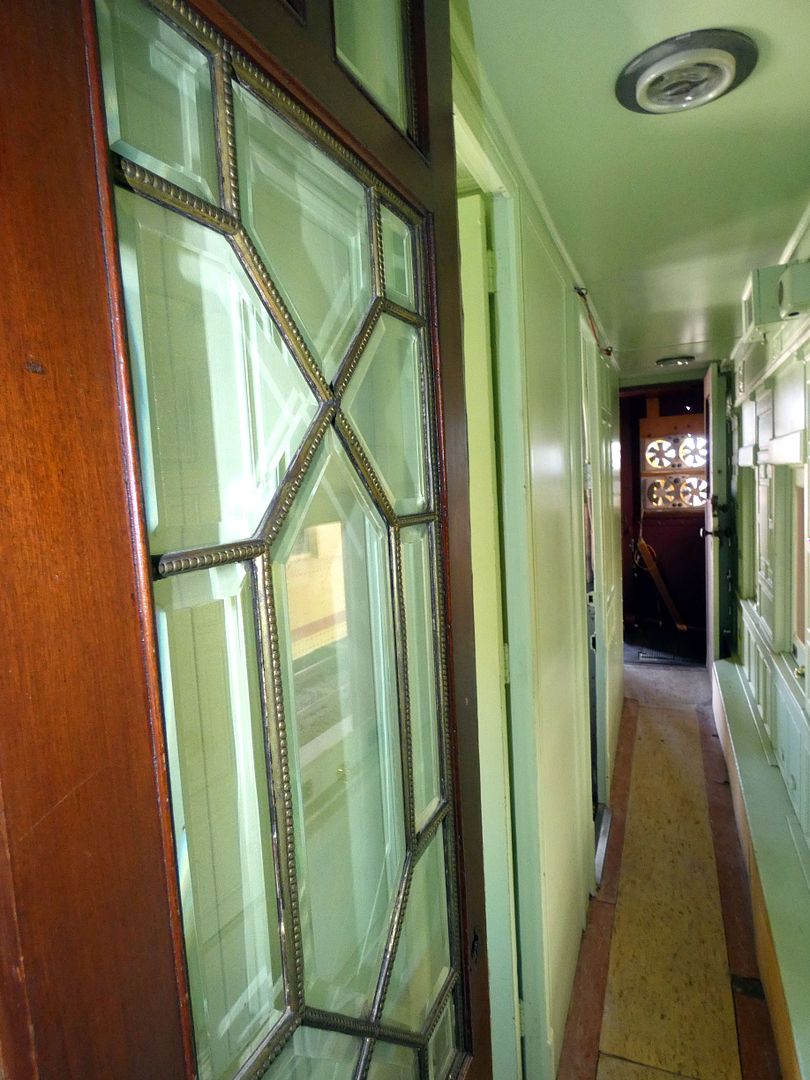


One of the most recently restored pieces in the collection is the Ellsmere, a circa 1899 Palace Car (one of the few surviving such cars).

It had been built by Wagner Palace Car Company at the behest of its president, Dr. William Seward Webb, to be used as a kind of sales model of a private business car that would be hitched to the back of a longer train.

The area located farthest to the back was the English oak-paneled Observation Room, where you could step out and watch the landscape from behind the railing of the rear platform.

It was initially constructed entirely of wood—oak, mahogany, laurel, and primavera—with a partial steel underframe added later, around 1915. Its cost was about 10 times that of a standard wood passenger coach of the same era.

Dr. Webb and his family (including his wife Eliza a.k.a. Lila, daughter of New York Central Railroad's William Henry Vanderbilt) traveled cross-country via this railcar—from New York to Chicago, Arizona, and even Los Angeles—with trips taking place over the course of weeks at a time.

At 79 feet long, it contained en suite three bedrooms (with private toilet rooms)—plus a two-bunk compartment to house the porter and cook. Including guests who wouldn't be staying overnight, it was designed to accommodate 10-14 passengers.

While the family would normally go to a train station restaurant (like a Harvey House) for dinner, they'd enjoy breakfast and lunch served in the car's 18-foot-long parlor and dining room (a.k.a. the Mahogany Room)...

...where Dr. Webb's desk was conveniently situated right next to a liquor cabinet.

Meals were prepared in the 7'x10' galley, which originally featured a coal stove that was replaced in the 1940s or '50s by the current one. It began without refrigeration, which was added later (as was an electrical update in the mid-1930s).

This car was retired from service in 1960—but for 60 years, it never lost its intricately carved woodwork.

Not even as it was upgraded over time to include modern features like air conditioning.

Sure, there have been some minor adjustments and improvements over time—but many of its original elegant details (like brass hardware) still remain.
Related Posts:

No comments:
Post a Comment